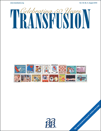Transfusion premedication to prevent acute transfusion reactions: a retrospective observational study to assess current practices
This project was supported with a Frederick Banting and Charles Best Canada Graduate Scholarship (Master's Award) from the Canadian Institutes of Health Research and infrastructure grant support from Canadian Blood Services.
Abstract
BACKGROUND: The use of premedication to prevent acute transfusion reactions has been estimated to occur in 50% to 80% of transfusions. While this practice has some biologic rationale, few clinical studies have been performed to assess the efficacy of this practice, and the methodologic quality of these studies is variable. The primary objective of this study was to describe current practices regarding transfusion premedication to prevent febrile nonhemolytic transfusion reactions, mild allergic transfusion reactions, and transfusion-associated circulatory overload.
STUDY DESIGN AND METHODS: We conducted an observational retrospective chart review of a stratified random sample of 324 transfusions that took place over a 6-month period. Data were abstracted from medical records and then scanned into a database for analysis. We calculated inter- and intraobserver agreement on key abstracted data to estimate assessment error. A two-phase adjudication process was used to determine whether or not medications given before the time of each transfusion were intended as premedications.
RESULTS: Of the transfusions sampled, 1.6% (95% confidence interval, 0.4-3.9) were associated with premedication medications to prevent an acute transfusion reaction. Inter- and intraobserver reliability in the abstraction of key data points was good. Good agreement in adjudicator classification of outcomes was achieved only when adjudicators were provided with patient source documents.
CONCLUSIONS: Premedication use was infrequent and much less common than previously reported. Improved methods of capturing transfusion premedication, which likely require prospective assessments, are needed for future research studies.




